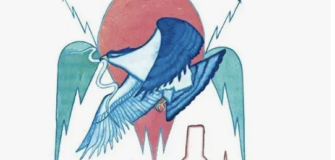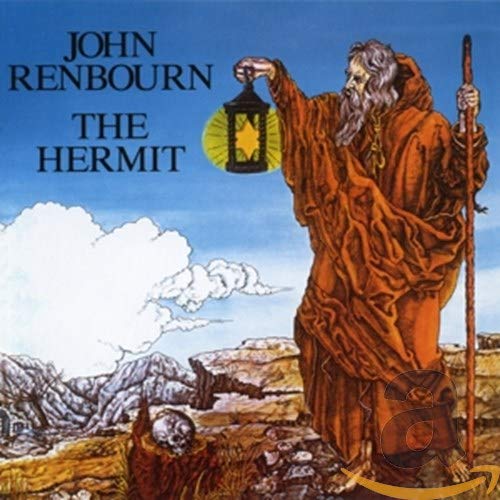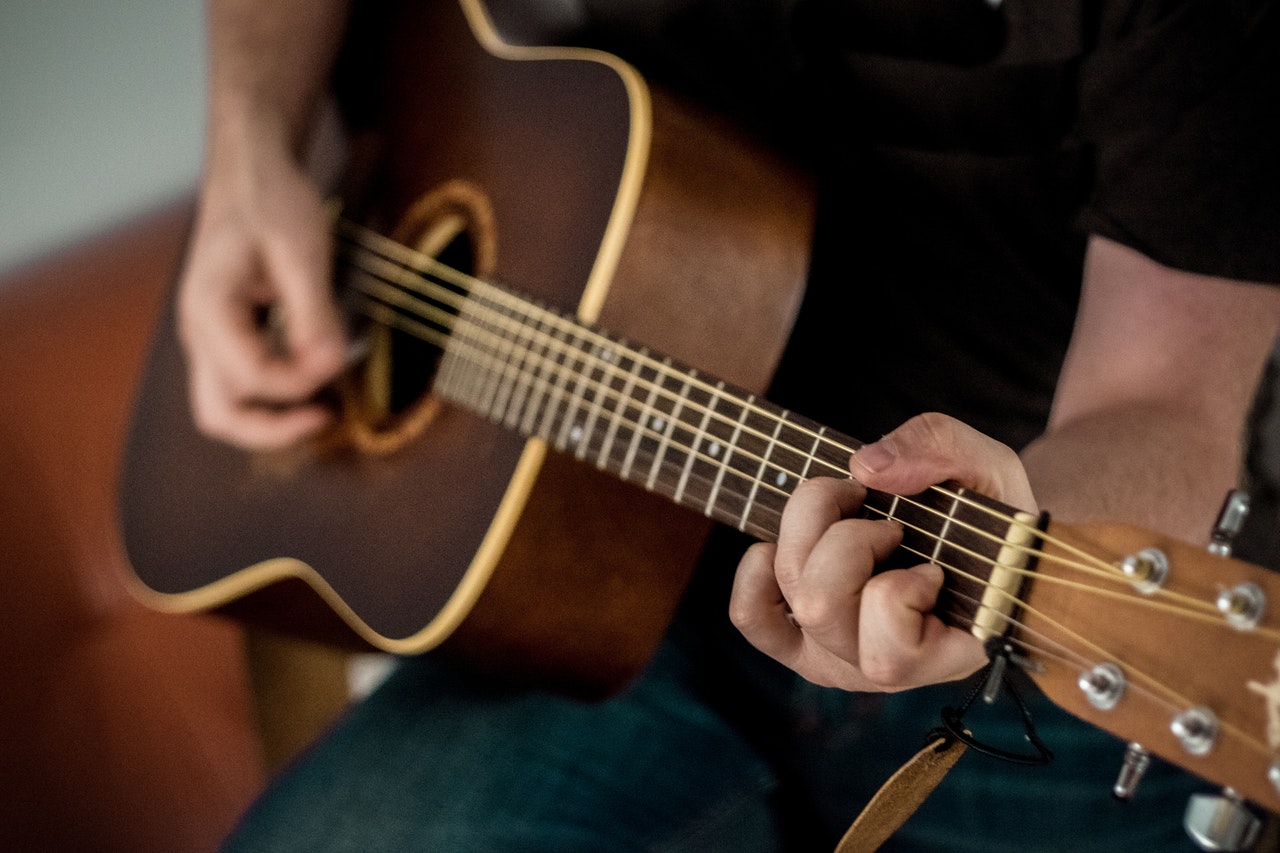Little Axe
Share

By: Stephen Rose

Little Axe is the alias for Skip McDonald, a blues guitarist who has spent his career at the forefront of emerging musical trends. At Sugar Hill Records, he laid down the rhythms for many seminal and classic hip-hop and rap recordings. Then at London’s On-U Sound label, he formed Tackhead, the house band for Adrian Sherwood’s experiments in techno, dub, and industrial dance music. Most recently he has been the driving force behind Little Axe, releasing several albums that combine blues, gospel, rock, reggae and funk.
Skip McDonald, was born Bernard Alexander in Dayton, Ohio in 1949. His musical odyssey began at an early age when he learned to play blues guitar from his father. By the time he was ten he was playing professionally with local jazz musicians, then at twelve he switched to doo-wop and joined a gospel choir. After high school, he and several friends moved to New York City and formed a group called The Entertainers, which toured throughout the East Coast.
In 1973, Skip McDonald moved to Hartford Connecticut and joined the disco-funk band Wood, Brass & Steel, which included bassist and future musical collaborator Doug Wimbish. The group released their self titled debut in 1976 on All Platinum Records (a label owned by Sylvia and Joe Robinson, who would go on to form Sugar Hill Records). The LP spawned a pair of minor hits including “Always There,” and the underground classic “Funkanova.”
[Sylvia Robinson was half of the R&B duo Mickey & Sylvia, who had a big hit in 1957 with “Love Is Strange,” inspired by a Bo Diddley riff. In 1966, she co-founded All Platinum Records, and in 1968 co-wrote one of the labels biggest hits “Love on a Two-Way Street,” performed by The Moments. In 1973, she had a #3 hit under her own name with the self-penned “Pillow Talk.” In 1979, she co-founded Sugar Hill Records, named for the culturally rich Sugar Hill area of Harlem. At Sugar Hill, she produced “Rapper’s Delight,” the first song to popularize hip-hop music in the United States. She also co-wrote and produced “The Message” for Grandmaster Flash, which is credited as the first rap song to feature socially conscious lyrics. By commercializing the market for rap records, Sylvia Robinson is credited as the mother of modern hip-hop.]
In 1979, McDonald and Wimbish teamed up with drummer Keith LeBlanc to form the Sugarhill Gang, the house band for Sylvia and Joe Robinson’s pioneering rap label Sugar Hill Records. For the next three years they performed on several seminal rap and hip-hop recordings including “Rapper’s Delight,” and two early hits for Grandmaster Flash, “The Message” and “White Lines.” Other Sugarhill artists they recorded with include Afrika Bambaata, Melle Mel, and Force M.D.
[Hip-Hop and Rap music had been popular throughout the 70’s in the dance halls and small clubs of the Bronx before Sylvia Robinson “discovered” it in 1979. It originated in Kingston, Jamaica in the 1950’s with the mobile sound system street parties hosted by DJ’s such as Duke Reid and Clement Dodd. The DJ’s would arrive with their equipment loaded on flatbed trucks and spin American R&B music on turntables for live audiences while talking over the dance beats in a technique known as “toasting.” As American R&B gave way to Rock ‘n’ Roll in the early sixties, the DJ’s started their own recording studios, such as Studio One and Treasure Isle, and developed a new style of fast-shuffling music with a local Jamaican flair they called Ska. In 1967, a youth from Jamaica named Clive Campbell (aka DJ Kool Herc) moved to the Bronx, bringing over the concepts of sound system parties and toasting – which later evolved into hip-hop and rap. DJ Kool Herc is also credited with introducing the “merry-go-round” concept, whereby a copy of the same record was played on parallel turntables to sustain extended rhythm breaks for the B-boys, or break dancers. These sound system parties would go on all night long, making them initially unrecordable, and leading to the hiring of MC’s to host the parties. These MC’s developed their rhyming skills and evolved into today’s rappers. Likewise, remixes – popular in hip-hop and contemporary dance music – can trace its roots back to the Jamaican art of dub rhythms, or “riddims.”]
In 1981, drummer Keith LeBlanc began freelancing at Tommy Boy Records where he met famed British producer and mixologist Adrian Sherwood, known for his experimental dub and techno dance records at On-U Sound in London. Sherwood convinced the trio of McDonald, Wimbish and LeBlanc to relocate across the pond where they rechristened themselves as the industrial-funk outfit Tackhead, helping Sherwood develop a new style of music that combined elements of hip-hop, funk, dub and techno. One of their first collaborations was on Mark Stewart’s “As The Veneer of Democracy Starts To Fade,” an early experiment in industrial dance music. They also performed on Bim Sherman’s reggae classic “Miracle,” which featured Indian percussionist Talvin Singh.
Tackhead also performed at On-U Sound’s live sound system reggae concerts with Gary Clail functioning as MC and Adrian Sherwood operating the mixing board. Sherwood combined Tackhead’s funky basslines and hammerblow percussions with Gary Clail’s political rants to create a wall of sound effect, resulting in a unique musical experience for British concert goers in the mid-1980s.
Tackhead was based on the belief, stated Sherwood, that there is common ground shared in “the music of Captain Beefheart, Prince Far I, King Tubby and Jimi Hendrix”. All you have to do is find it.
In 1987, Tackhead released Tackhead Tape Time, featuring Gary Clail’s vocals and Adrian Sherwood’s trademark sample-laden dub production. The album included early Tackhead classics such as “Hard Left,” “What’s My Mission Now?,” and “Mind at the End of the Tether.”
During this period Keith Leblanc also released two solo LPs: the highly inventive Major Malfunction (1986), which was inspired by the Space Shuttle Challenger disaster; and Stranger than Fiction (1989), which featured the other members of Tackhead.
 Around this time the group began to jell as a band, and started adding vocalists to what had been up until then a largely instrumental affair.
Around this time the group began to jell as a band, and started adding vocalists to what had been up until then a largely instrumental affair.
In 1989, Tackhead released their first LP proper, Friendly as a Hand Grenade, featuring vocalist Bernard Fowler. Many older instrumental tracks were reworked with the addition of lyrics for this release.
Whereas a lot of dub producers are limited to using samples to create albums, Tackhead provided Adrian Sherwood with the luxury of a house band performing for him, giving his music a more authentic, organic sound. While the resulting tracks may have sounded like remixes of old funk music, they were in actuality original compositions and live performances. However, some of Tackhead’s most effective music may have been the songs where Adrian Sherwood’s fingerprints are lightest, such as the album’s standout track “Stealing.” Other highlights on this release include “Tell Me The Hurt,” “Airborn Ranger,” “Ticking Time Bomb,” and “Body To Burn,” featuring Keith LeBlanc’s tour de force drumwork.
In 1990, Tackhead released their final album, Strange Things, and mounted a world tour which marked the zenith of the band’s commercial success.
Despite not recording any new material as Tackhead since 1990, the group members have continued to record as Sherwood’s backing band on various On-U Sound productions with artists such as Sinead O’Connor, Nine Inch Nails, Megadeth, and Living Colour. Subsets of the group have also appeared in various guises such as the Strange Parcels, Videohead, and Barmy Army.
[Skip McDonald continues to work with Adrian Sherwood’s On-U Sound productions, including artists such as African Head Charge, Dub Syndicate, and Junior Delgado. Doug Wimbish joined Living Colour, then later worked with Mos Def. Keith LeBlanc played drums on the first Nine Inch Nails album, while Bernard Fowler is currently a backing vocalist with the Rolling Stones.]
In 1992, Skip McDonald adopted the name Little Axe, taken from the Bob Marley song “Small Axe,” and gospel singer Willmer ‘Little Ax’ Broadnax. As Little Axe, he created a unique take on delta blues music, blending genres of R&B, gospel, rock, reggae, dub, and funk.
“I want to write, record and perform music that connects with people,” he says, “something they can touch.”
 In 1994, Little Axe debuted with the single Ride On (Fight On), which was featured in a Barclay’s Bank commercial. It was followed later that year by a full length album titled, The Wolf That House Built, a tribute to Howlin’ Wolf and Son House. The album featured Doug Wimbish and Keith LeBlanc from Tackhead, and Indian percussionist Talvin Singh.
In 1994, Little Axe debuted with the single Ride On (Fight On), which was featured in a Barclay’s Bank commercial. It was followed later that year by a full length album titled, The Wolf That House Built, a tribute to Howlin’ Wolf and Son House. The album featured Doug Wimbish and Keith LeBlanc from Tackhead, and Indian percussionist Talvin Singh.
The album is an Adrian Sherwood On-U Sound production, released on the legendary R’n’B label Okeh. It contains an eclectic collage of samples, so at any given time it is not always clear who or what you are hearing. As with any dub album, Sherwood’s production is a significant contributor to the process.
Mostly driven by a fat low end bass, slinky delta blues guitar, and clean, crisp drums, the album is a wholly original exercise in ambient dub blues. It is a dark and thrilling listen from beginning to end, combining an eclectic mix of samples with live performance and original vocals over funk and reggae rhythms. Highlights including the opener “Ride On,” which samples Howling Wolf’s discussions of life on the road; and the extended up tempo jam of “Dayton,” where Talvin Singh’s percussion is prominently featured. Other standouts include the second track “The Time Has Come;” the space-experiment “Crossroads;” the gospel-tinged “Never Turn Back;” and the Appelachian inspired bluegrass of “Another Soulful Day.” Kevin Gibb’s vocals are at the forefront on “Crossfire;” while Doug Wimbish provides a frenetic bass attack on “Hear My Cry.”
In 1996, the second Little Axe album, Slow Fuse, was released. Both albums featured tabla player Talvin Singh, and added vocals courtesy of Kevin Gibbs and Sas Bell.
 For the next six years, McDonald worked on other projects until resuming Little Axe in 2002 with the release of Hard Grind on Fat Possum Records.
For the next six years, McDonald worked on other projects until resuming Little Axe in 2002 with the release of Hard Grind on Fat Possum Records.
The album opens with a brief slide guitar intro establishing the Delta influence, then starts dropping Howlin’ Wolf spoken word samples on the second track “Blues Story II;” which is followed by the drawling southern comfort of “Run Here Boy.” A heavy dub vide wraps itself around “One Drop Blues;” Alan Glen’s harmonica is featured prominently on “All Night Party;” gospel preaching inspires “Down To The Valley;” then the album closes out with the rasta beats of “Seek The Truth.”
[Two other highlights from Hard Grind, “Midnight Dream” and “Long Way To Go” were featured in 2004 on the Putumayo Blues Lounge compilation.]
In 2004, Tackhead briefly reformed to engage in a limited tour of North America and Europe. The same year, Little Axe released Champagne & Grits, on Peter Gabriel’s Real World Records label.
 In 2006, Little Axe and the On-U Sound team reunited for another exercise in ambient blues with Stone Cold Ohio, released on the Real World Records label. Rather than being more experimental, this effort is somewhat more conventional in nature than its predecessors, although equally rewarding. The album opens with a reworking of the Rev. Gary Davis’ “If I Had My Way;” followed by the socially-conscious spoken piece “Jive Talk.” Next “Same People” recaptures the dub magic from the earlier albums; and “Rockin’ Shoes” provides a satisfying cover of a Little Feat chestnut. The seventh track “Victims” has a nice mellow vibe; and “Let Me Ride” is a smooth groove. Other standouts include “Hard Times,” and the instrumental “No Bottom.” Alan Glen provides harmonica parts for this recording.
In 2006, Little Axe and the On-U Sound team reunited for another exercise in ambient blues with Stone Cold Ohio, released on the Real World Records label. Rather than being more experimental, this effort is somewhat more conventional in nature than its predecessors, although equally rewarding. The album opens with a reworking of the Rev. Gary Davis’ “If I Had My Way;” followed by the socially-conscious spoken piece “Jive Talk.” Next “Same People” recaptures the dub magic from the earlier albums; and “Rockin’ Shoes” provides a satisfying cover of a Little Feat chestnut. The seventh track “Victims” has a nice mellow vibe; and “Let Me Ride” is a smooth groove. Other standouts include “Hard Times,” and the instrumental “No Bottom.” Alan Glen provides harmonica parts for this recording.
In 2009, Skip McDonald collaborated with Mauritanian (African) musician Daby Touré on a side-project titled Call My Name.
In 2010, he released another Little Axe album titled ‘Bought For A Dollar, Sold For A Dime,’ on Real World Records, followed in 2011 by ‘If You Want Loyalty Buy A Dog.’
Video
Little Axe – Interview (2008)
httpv://www.youtube.com/watch?v=fpTXLZI231s&feature=related
Little Axe – Storm Is Rising (1996)
httpv://www.youtube.com/watch?v=L63iDyXqLkc&feature=related
Little Axe – Ride On (1996)
httpv://www.youtube.com/watch?v=6IPEdEIt4mg&feature=related”
httpv://www.youtube.com/watch?v=gj0BRDFGof8&feature=relmfu
Little Axe (2009)
httpv://www.youtube.com/watch?v=26-b5J04Rhw&feature=related
Tackhead – Hard Left (1986)
httpv://www.youtube.com/watch?v=e8MN3XcJf_k&feature=relmfu
Tackhead – Mind and Movement Control
httpv://www.youtube.com/watch?v=GFmZsHLC1Wk&feature=related












